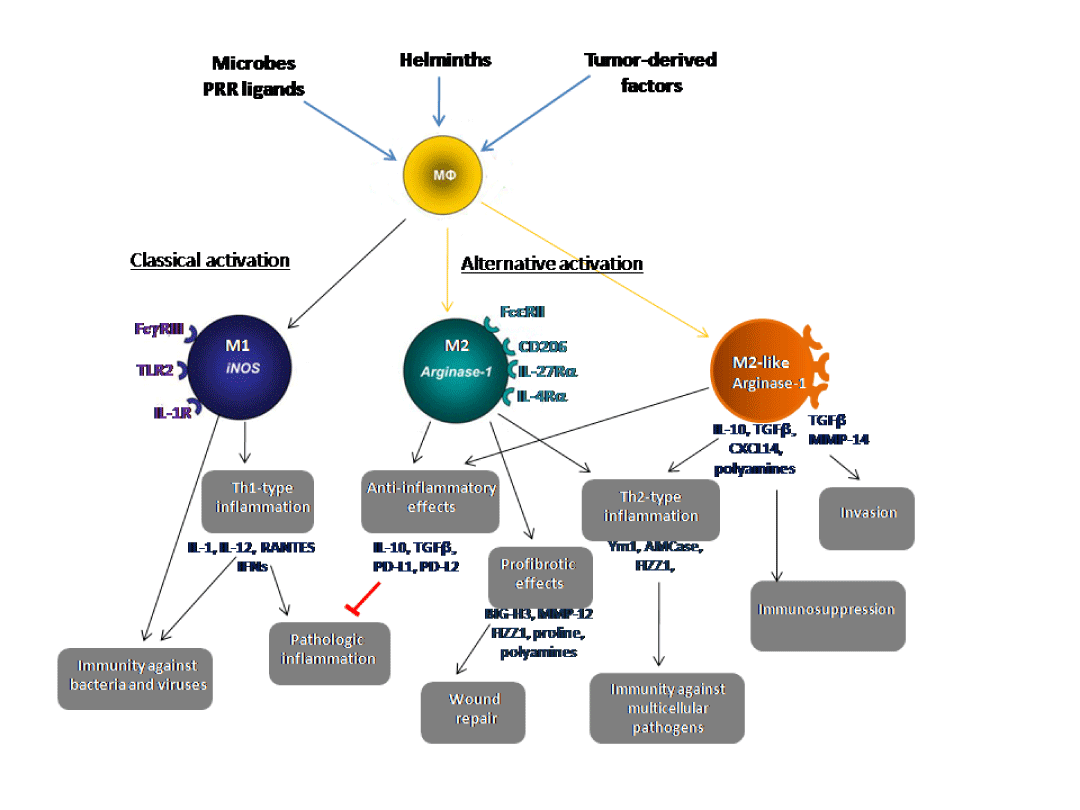
 |
| Figure 1: Macrophage differentiation in response to different pathogens. Depending on the cytokine environment, as well as the presence of specific stimuli macrophages can differentiate into classically or alternatively activated macrophages. Many microbes trigger classically activated macrophages, which up-regulate iNOS, resulting in nitric oxide production, and can contribute to pathologic inflammation. In contrast, helminths induce alternatively activated macrophages, which upregulate arginase 1 and which may be important in several aspects of host protection: parasite resistance, dampening harmful associated inflammation, and wound healing. Tumor cells also induce alternatively activated macrophages and myeloid-derived suppressive cells, which up-regulate arginase 1, pro-invasive factors and cytokines/chemokines which modulate many aspects of host immune system inducing local and systemic immunosuppression. |